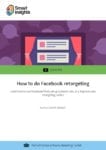How to use strategic targeting to boost your results from Facebook video ads
In March, I wrote about some of the most effective ways to ensure you create strong, brand-building creative for your Facebook video campaigns. With competition for attention at an all-time high, it’s never been more important to create content that is interesting, relevant and clearly branded to make consumers stop and take notice.
The quality of the creative is absolutely essential and an area in which we should continually strive to optimise and improve. However for Facebook the importance of developing brand-building creative is closely followed by the level of rigour you dedicate to how and whom you target:
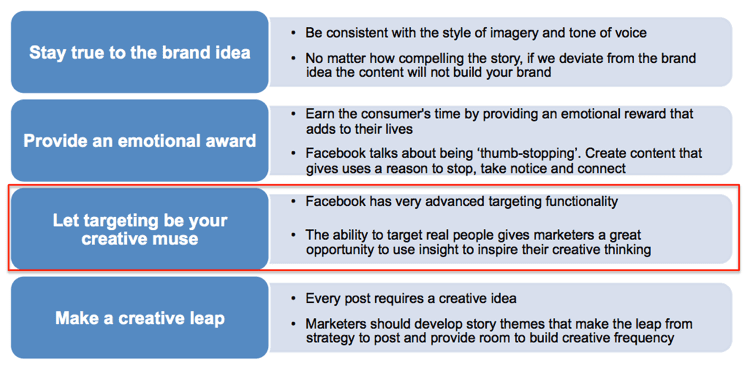
In the second of our short series on how to make an effective Facebook video campaign, I’m going to take a look at some of the best practices for developing a strategic targeting approach to campaign planning.
Key steps for strategic targeting on Facebook
Facebook gives marketers many different ways to distribute content to reach a target audience and the success of a campaign can often live or die by the targeting options you choose to use. Even if you follow all of Facebook’s creative brilliant basics (e.g. make an impact within the first three seconds; ensure the story works without sound; include a clear call-to-action within the ad), if you don’t manage to effectively reach your target audience and meet your overall objective then this effort could all be for nothing.
Whilst the specific goals, objectives and budgets will vary for every business and campaign, marketers looking to build brand awareness should consider the following three steps:
1. Define your target
Focus on making your campaign sharply relevant but scalable so that you can still reach large audiences of the right people.
The key here is to avoid targeting niche audiences of really small groups of people that lack scale as this is unlikely to meaningfully move your business. Last summer P&G announced that it would no longer buy highly targeted Facebook ads because targeting to super-specific audiences was expensive, but didn't result in a big difference to its business.
Optimising towards reach will maximise the number of people impacted by the media, leading to changed behaviour. Driving growth therefore requires a trade-off between reach and precision:
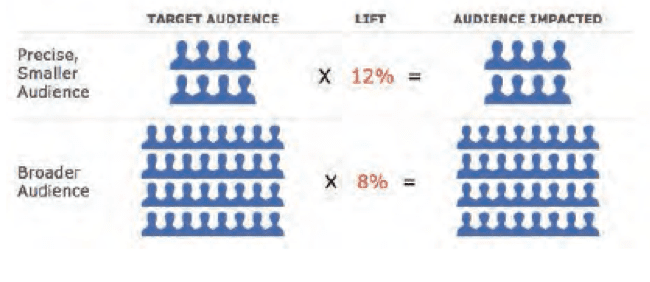
2. Balance broad with niche
Of course it’s worth acknowledging that P&G is the world’s largest advertiser and their objective is often to continuously reach all buyers of the category in which their brands sit and last year P&G were probably targeting too narrowly too often. However precision does have value and smaller businesses will have different approaches to building brand awareness as well as vastly smaller budgets!
Nevertheless the lesson we can take away is that if you need to reach a niche audience, extend your reach by targeting a broader audience simultaneously. Balancing broad audiences with niche audiences will help deliver relevance at scale and maintain cost efficiencies.
Facebook offers a multitude of targeting capabilities to enable marketers to layer in more narrow targeting based on specific audience attributes:
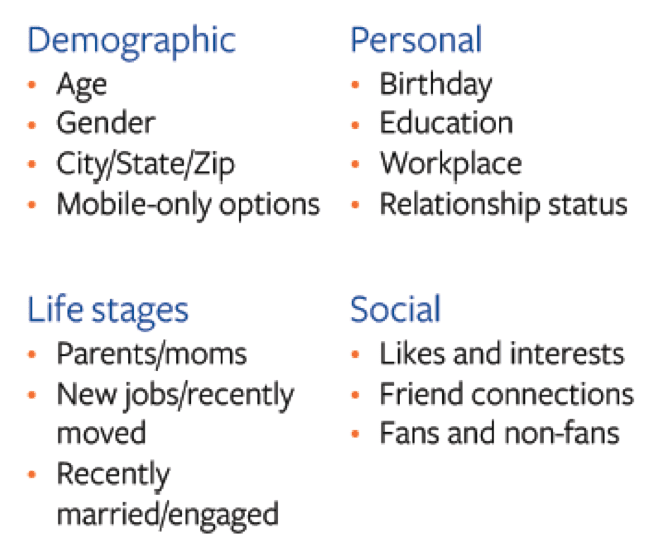
Facebook offers guidance on when and how to target specifically and broadly, and the key takeaway is to only separate a target audience into its own ad set if you'd bid differently to reach the people in that audience compared to those in your other audiences. Otherwise the advice is to combine your audiences into one ad set with a larger budget. This broad targeting approach trusts Facebook’s system to find the right people from a large pool (providing their system can gather enough conversion data).
3. Extend your audience through smart retargeting
One of the tactics to balance broad with niche is to extend your audience by retargeting (aka remarketing). This can include targeting:
- People that visit your website and/ or mobile app
- Users you have in your database
- Similar profiles to your existing customer base
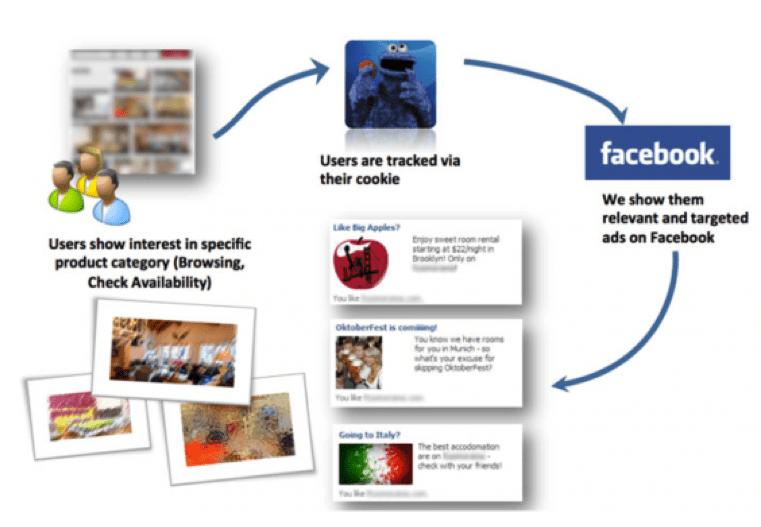
Retargeting is about getting relevant visitors to return and then do business with you. With Facebook marketers have two options:
A) Facebook custom audiences/ website custom audiences
Custom Audiences lets you reach customers you already know with ads on Facebook. You can upload a list of email addresses or phone numbers of at least 20 people and Facebook can deliver an ad to those people if they’re on the platform. You can also build audiences from the people that visit your website from others who use your mobile app
B) Lookalike Audiences
This is a way to reach new people who are likely to be interested in your business because they’re similar to customers you already care about. When you use Custom Audiences, you can choose to create a Lookalike Audience that targets people who are similar to one of your Custom Audience lists
Some of the potential benefits of Facebook retargeting can be seen in this case study via Salesforce.com, which shows that a major retailer found that by coordinating Facebook advertising and email they connected with customers 22 percent more likely to purchase. By using email and advertising together, the retailer extended the reach of their email program by 77 percent:
For an in-depth tutorial into Facebook retargeting and Custom Audiences check out our Smart Insights’ ‘Quick Win' on setting up Facebook retargeting.
Download Premium Member resource – Facebook retargeting
Our Facebook retargeting guide is designed to offer a step-by-step approach, which can help you to make an action plan for your Facebook retargeting strategy. This helps you to plan, manage and optimise your retargeting better.
Access the How to do Facebook retargeting
Conclusion
The advantage of using a strategic targeting approach for your Facebook ad campaign is to avoid targeting niche audiences that sacrifice the scale needed to drive a sales uplift. This is particularly important when the objective is to build brand awareness because whilst precision has many benefits, the evidence suggests that brands who target too narrowly are unable to generate the reach and scale needed to make a meaningful impact to their business.







